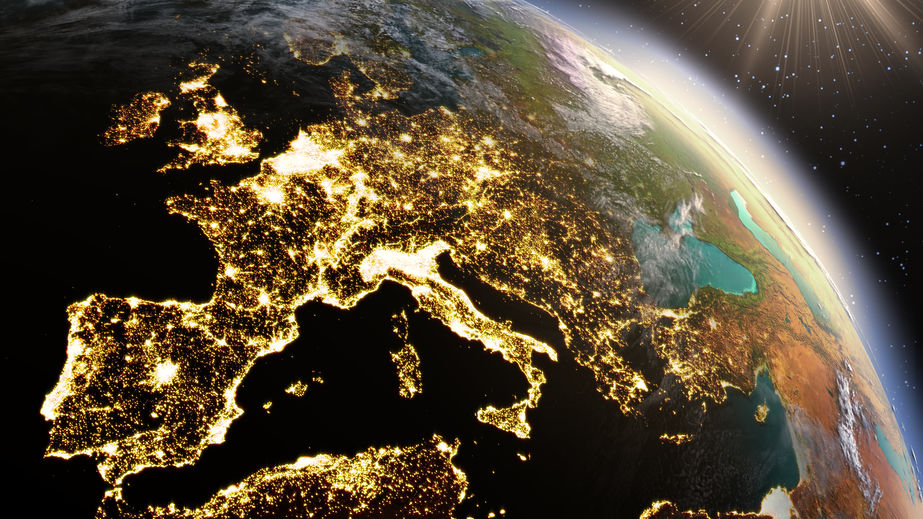BY LARRY BELL:
Last week I attended a particularly timely Texas Public Policy Foundation-sponsored presentation by Cambridge University principal lecturer Rupert Darwell of his book “Green Tyranny.” Highlighted in this column, Rupert’s insights offer urgent Green New Deal lessons for America taken from European renewable energy experiences.
The biggest player in this ironic and economically disastrous tragi-comedy is Germany.
Their 2014 Renewable Energy Sources Act (or EEG) established a government-set feed-in tariff funded by a surcharge on electricity users. EEG resulted in soaring retail electricity costs with no CO2 reductions whatsoever.
A large 19 percent fall in German CO2 emissions did actually occur earlier between 1990 and 1999 when many lignite-burning power stations in East Germany were closed following reunification.
This emission reduction trend then reversed, increasing 5 percent during a period between 1999 and 2012 when installed wind and solar capacities were increased nearly 15-fold — from 5 GW in 1999, to 64.3 GW in 2012.
By 2013, Germany had installed more solar capacity than any other nation, much of it imported from China. Solar PV panels and wind turbines represented 37.5 percent of generating capacity. Of the two, solar was less efficient than wind.
Although its rated capacity was 4.6 percent more, solar generated 40 percent less electricity.
The promised 400,000 new green jobs which were touted to gain German labor union buy-in never materialized.
Meanwhile, 40 million German households witnessed the total amount they paid for electricity increase an estimated 50 percent in nine years between 2006 and 2015.
Over eight years up to 2014, businesses consuming between 160 to 120,000 megawatt hours (MWh) per year saw 25 percent increases. Industrial users wound up paying 26 percent more for electricity than the EU average.
Hidden from public view were spiraling power grid costs which jumped nearly two-thirds between 2010 and 2014 as required to connect wind and solar farms scattered over the countryside. Subsidies encouraged wind and solar developments on poorly suited sites.
Adding intermittent wind and solar electricity also challenged power reliability.
Up until 2008, Germany’s grid had never been interrupted. In 2012 there were 1,000 brownouts, followed by more than 2,500 in 2013.
Sometimes wind or solar generate more power than the grid can safely handle or consumers can use. This has necessitated Germany having to pay Switzerland and the Netherlands to take “garbage power” off their grid.
Rupert Darwell points out that adding more renewables to the grid rapidly pushes up consumer costs and taxes.
In 2014, Danes, with the highest production of wind capacity in the world, unsurprisingly also had the highest electricity prices in the world (US 36.7 cents) per kWh, about four times what Americans do. Germans closely follow, paying an average US 33.1 cents per kWh.
Third-place in the high-cost renewable energy marathon goes to Spain whose gold-plated solar PV subsidies have paid out 12-times the market price. In 2007 Spain had 690 MW of installed solar capacity. This rose within 5 years to more than 6 GW.
An eight-fold increase in all renewable subsidies accounted for nearly one percent of the Spanish GDP. To hide the cost, the Madrid government stopped utilities from passing on the full cost of the price supports.
They chose instead to run up a huge tariff deficit which added to Spain’s deep financial woes when the euro crisis hit.
Britain, a latecomer to the wind and solar extravaganza, also experienced skyrocketing electricity prices. From 2004, average domestic energy prices increased 75 percent over a 10 year period. This earned them the dubious distinction of ranking second highest in the EU (excluding Cyprus and Eastern Europe).
British electricity suppliers are forced to buy green Renewable Obligation Certificates (ROC) which by 2020/21 are expected to add nearly nine percent to domestic electricity bills.
Unlike Spain, Germany’s green lobby was too entrenched to finally prune back renewable subsidies; or as David Cameron did after winning the 2015 British general election. Instead, the Merkel government’s plan is to derive 80 percent of German electricity from renewables within 40 years.
The magical method to accomplish this assumes that German electricity production can be cut by 45 percent compared to 2008 through a combination of reducing demand by one-fifth and by importing one-fourth of their needs.
In other words, Germany will somehow import electricity from neighbors who — like them — will depend more upon the same North Atlantic weather-reliant renewable energy sources.
That plan is apparently catching on.
By 2014, California was importing one-third of its electricity. Promoting itself as a model for America, it is now counting on a tried-and-true socialist Green New Deal.
The brilliant daisy chain free energy lunch strategy is for all other forty-seven contiguous states to supply them the one-third they need from the one-third of their electricity they then will also be forced to import from each other.
Karl Marx must be grinning.
